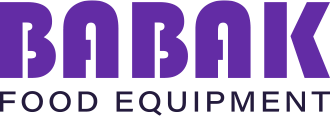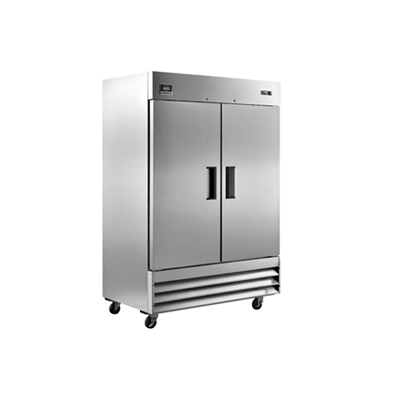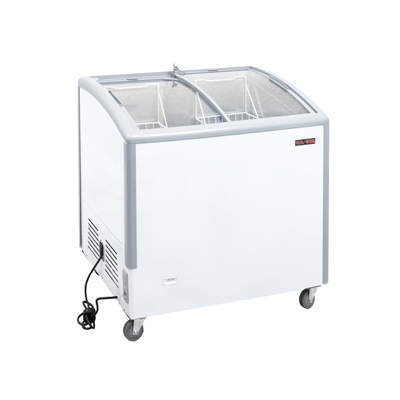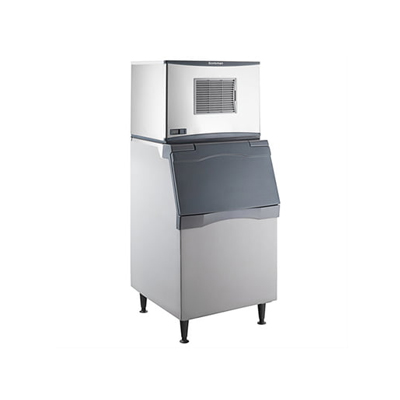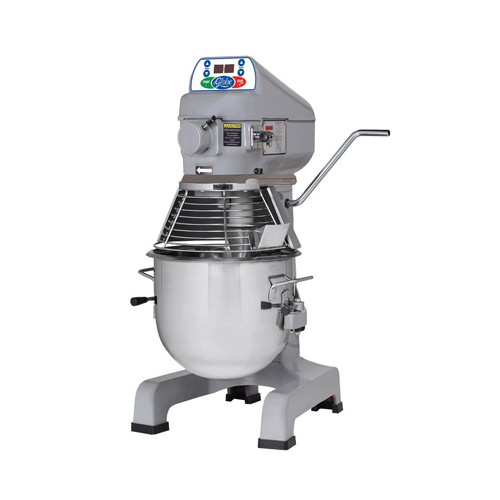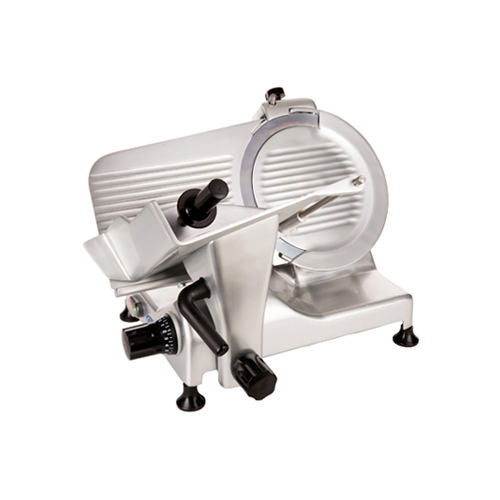Commercial Baking Equipment: Essential Solutions for Restaurants

Did you know that over 60% of restaurants report improved efficiency after upgrading their bakery equipment? High-quality equipment is crucial for maintaining consistency and meeting customer demands in a fast-paced environment.
At the heart of every successful bakery lies reliable equipment. From mixers and ovens to dough preparation tools, the right setup can streamline operations and enhance product quality. Investing in these essentials ensures that your bakery runs smoothly and produces consistent results.
Babak Food Equipment stands out as a trusted expert in providing tailored solutions for Canadian restaurants. Their extensive range of equipment, including spiral mixers and convection ovens, is designed to optimize production and elevate the quality of your baked goods.
Key pieces of equipment like proofing cabinets and bread slicers play a vital role in maintaining consistency and reducing preparation time. These tools not only enhance efficiency but also contribute to the overall quality of your bakery products.
By focusing on practical advice and industry insights, this guide will help you make informed decisions about your bakery equipment. Whether you’re upgrading existing gear or setting up a new kitchen, the right tools can make all the difference in achieving your culinary goals.
– High-quality bakery equipment is essential for efficiency and consistency.
– Babak Food Equipment offers tailored solutions for Canadian restaurants.
– Key tools like mixers, ovens, and dough prep equipment are vital for optimal production.
– The right equipment can significantly enhance the quality of your baked goods.
Introduction: The Importance of Commercial Baking Equipment
When it comes to running a successful restaurant bakery, high-quality tools are the backbone of your operation. The right bakery equipment ensures consistency, efficiency, and scalability, making it a cornerstone of your business.
Choosing the proper size and variety of tools is crucial. A well-sized mixer, for instance, ensures consistent dough mixing, while sturdy racks optimize baking and cooling processes. These elements work together to streamline your workflow and improve product quality.
| Equipment Type | Size Considerations | Benefits |
|---|---|---|
| Mixer | Matches batch size needs | Consistent dough quality |
| Racks | Accommodates tray sizes | Efficient baking and cooling |
| Ovens | Scales with production volume | Uniform baking results |
Investing in industry-specific tools helps meet production demands and enhances customer satisfaction. Quality equipment directly impacts product consistency, which is vital for building a loyal customer base.
Understanding Your Restaurant’s Bakery Needs
As a restaurant owner, understanding your bakery needs is the first step to creating delicious treats that attract customers. Whether you’re serving fresh bread, pastries, or buns, the right tools can make a big difference.
Start by asking yourself these key questions: What types of products are on your menu? How much do you need to produce daily? These answers will guide your equipment choices and ensure you meet customer demands effectively.
- Consider the types of pans and trays you need for your menu items. For example, bun pans and bread pans serve different purposes and require specific sizes.
- Think about production volume. A small restaurant might need a compact mixer, while a busy establishment requires larger, heavy-duty equipment.
- Features like bun-making capabilities can be a game-changer for restaurants offering sandwiches or burgers.
Evaluating product consistency and output capacity is also crucial. Look for equipment that can handle your production needs without sacrificing quality. The right choices will improve your daily operations and the quality of your baked goods.
For more insights on selecting the right tools, visit our guide on essential commercial bakery equipment.
Remember, the right equipment can streamline your operations and elevate your menu offerings, helping your restaurant stand out in a competitive market.
Planning Your Equipment Purchase Strategy
Planning your equipment purchase strategy is crucial for ensuring your restaurant’s bakery operations run smoothly. A well-thought-out approach can help you avoid costly mistakes and ensure you get the right tools for your needs.
Start by evaluating your suppliers and considering both new and used equipment. This ensures you find reliable and durable options that fit your budget. Babak Food Equipment offers a wide range of solutions tailored to Canadian restaurants, helping you make informed decisions.
- Analyze your needs against the wide range of products available to ensure you select equipment that aligns with your goals.
- Consider factors like space, utility requirements, and budget constraints to create a strategy that minimizes risk and maximizes performance.
| Equipment Type | Key Features | Benefits |
|---|---|---|
| Mixer | Matches batch size needs | Consistent dough quality |
| Oven | Scales with production volume | Uniform baking results |
| Racks | Accommodates tray sizes | Efficient cooling and storage |
A well-planned strategy ensures you invest wisely, enhancing efficiency and product quality.
“A well-thought-out equipment strategy is the foundation of a successful bakery, ensuring you meet customer demands effectively.”

How to Choose the Right Commercial Baking Equipment
Selecting the appropriate tools for your restaurant’s needs is vital for ensuring efficiency and product quality. The right equipment not only enhances workflow but also contributes to long-term cost savings. Let’s explore how to make informed decisions.
Evaluating Your Menu and Production Volume
Your menu and production volume are critical factors in choosing the right tools. For instance, a sheeter is essential for consistent dough preparation, especially for high-volume production. A bun pan rack can significantly streamline your workflow, ensuring your products are ready on time. Consider the types of pans and trays needed for your menu items, as they directly impact your equipment choices.
Assessing Space and Budget Requirements
Space and budget are equally important considerations. A bakery display case can be a valuable addition, enhancing product presentation and attracting customers. However, it’s crucial to balance these elements with your available resources. A well-planned layout can optimize space utilization, while a realistic budget ensures you invest wisely without compromising on quality.
| Equipment Type | Space Considerations | Budget Impact |
|---|---|---|
| Sheeter | Compact design for efficiency | Varies based on production scale |
| Bun Pan Rack | Maximizes storage capacity | Cost-effective for high-volume needs |
| Bakery Display Case | Central placement for visibility | Higher initial investment |
By aligning your equipment choices with your menu and production needs, you can enhance efficiency and reduce costs. For more insights, visit Babak Food Equipment’s guide to explore tailored solutions for your restaurant.

Essential Bakery Equipment for Dough Preparation
Dough preparation is the cornerstone of any successful bakery. The right tools can transform your process, ensuring consistency and efficiency. Let’s explore the key equipment that makes dough preparation seamless.
Commercial Mixers
High-performing mixers are vital for consistent dough quality. These mixers come in various sizes, from compact 5-quart models for small batches to large 100+ quart units for high-volume production. They ensure uniform mixing, which is crucial for even baking results.
For instance, a spiral mixer is ideal for heavy dough, while a planetary mixer handles lighter mixes. Both models offer precise speed and timing controls, essential for achieving the perfect dough texture.
Dough Dividers and Sheeters
Dough dividers automate the portioning process, ensuring each piece is uniform. This not only saves time but also reduces waste. Sheeters, on the other hand, roll out dough to consistent thickness, perfect for pastries and bread.
These tools are especially beneficial for high-volume bakeries, as they minimize manual labor and ensure uniformity in every batch. Investing in such equipment can significantly enhance your bakery’s efficiency and product consistency.
| Equipment Type | Key Features | Benefits |
|---|---|---|
| Mixer | Variable speeds, timers | Consistent dough quality |
| Dough Divider | Automated portioning | Uniform dough portions |
| Sheeter | Adjustable thickness settings | Even dough rolling |
Efficient dough preparation directly translates to better product quality. By investing in the right tools, you can achieve consistent results and streamline your operations. For tailored solutions, visit Babak Food Equipment, a trusted name in Canada for high-quality dough preparation tools.

Baking Equipment Options: Ovens and Racks
Choosing the right oven and rack system is essential for achieving consistent and high-quality baked goods. Whether you’re running a small bakery or a large restaurant, the type of oven you use can significantly impact your results.
Convection Ovens
Convection ovens are a popular choice for many restaurants due to their ability to bake quickly and evenly. These ovens use internal fans to circulate hot air, ensuring that your products are cooked consistently. They are ideal for high-volume operations and can handle a variety of tasks, from bread to pastries.
Key benefits of convection ovens include:
- Fast baking times
- Even heat distribution
- Versatility in cooking different types of products
Convection ovens are especially useful for restaurants that need to produce large quantities of baked goods quickly and efficiently.
Deck and Roll-In Rack Ovens
For those looking for more traditional or artisanal results, deck ovens and roll-in rack ovens are excellent options. Deck ovens are known for their stone cooking decks, which provide a crispy crust and moist interior, making them ideal for specialty breads and pastries.
Roll-in rack ovens, on the other hand, are designed for high-output baking operations. They allow you to wheel in pan racks, saving time and labor. These ovens are perfect for restaurants that need to produce large batches of baked goods efficiently.
Key benefits of deck and roll-in rack ovens include:
- Artisanal results for specialty products
- High-output capacity
- Efficient labor utilization
Both types of ovens are well-suited for different restaurant settings and production requirements, ensuring that you can choose the option that best fits your needs.

Maintaining Your Bakery Equipment for Peak Performance
Maintaining your bakery equipment is crucial for ensuring it continues to perform at its best. Regular upkeep not only extends the lifespan of your tools but also ensures consistent quality in your baked goods.
Routine Maintenance and Inspections
Regular maintenance is essential for preventing equipment failures and ensuring longevity. Here are some key steps to follow:
- Check for wear and tear regularly, and address issues promptly to avoid larger problems.
- Monitor performance metrics to ensure your equipment is operating within optimal ranges.
- Schedule professional inspections at least twice a year to catch any potential issues early.
By staying on top of maintenance, you can extend the life of your equipment by 20-30% and reduce the need for costly repairs.
Cleaning and Sanitization Guidelines
Cleanliness is vital for both equipment performance and food safety. Here’s how to keep your tools in top shape:
- Clean your equipment thoroughly after each use to prevent residue buildup.
- Use non-abrasive cleaners to avoid damaging surfaces, reducing the risk of equipment damage by 40%.
- Sanitize all surfaces regularly to prevent contamination and ensure food safety.
Regular cleaning can reduce the risk of food contamination by up to 50%, ensuring your baked goods are always safe and of high quality.
Proper maintenance directly impacts the quality of your bread, pastries, and other baked goods. Consistent performance leads to consistent products, which in turn increases customer satisfaction. For more detailed maintenance schedules and professional advice, visit Babak Food Equipment to explore tailored solutions for your restaurant.

Optimizing Your Kitchen Layout for Efficient Baking
Your kitchen is the heart of your restaurant, and its layout plays a crucial role in determining efficiency and workflow. A well-designed kitchen layout not only enhances productivity but also ensures safety and ergonomics, making it easier for your team to perform at their best.
Strategic placement of cabinets, cases, and workstations can significantly streamline your operations. For instance, placing ingredient storage cabinets near mixing areas reduces movement, saving time. Display cases should be centrally located to showcase your goods, making them easily accessible for both staff and customers.
| Layout Type | Benefits | Optimal Use of Cabinets/Cases |
|---|---|---|
| Assembly Line | High-volume production, consistent results | Place ingredient cabinets near workstations; use display cases for finished goods |
| Zoning Layout | Efficient workflow, reduced cross-traffic | Assign specific cabinets for each zone; centralize display cases for easy access |
| Galley Layout | Space efficiency, ideal for small kitchens | Compact cabinets maximize space; display cases near the entrance attract customers |
For example, many successful restaurants use an assembly line layout for high-volume tasks, while reserving quieter areas for detailed work like cake decorating. This balance ensures that your kitchen operates smoothly during peak times.
By designing your kitchen with functionality and ergonomics in mind, you can create a space that reduces bottlenecks and enhances efficiency. A well-optimized layout not only boosts productivity but also contributes to a safer and more enjoyable working environment for your team.
Leveraging Technology and Innovation in Bakery Operations
Integrating modern technology with traditional bakery practices can elevate your business to new heights. By embracing smart solutions, you can enhance precision, reduce labor costs, and streamline your entire production process.
Smart Controls and Automation
Smart controls are revolutionizing how bakeries operate. These systems offer precise temperature management, automated mixing times, and real-time monitoring, ensuring consistent results. For instance, programmable logic controllers (PLCs) optimize dough mixing by maintaining uniform consistency across batches, which is vital for high-volume production.
- Automation reduces labor costs and boosts productivity, allowing your team to focus on creative tasks.
- Emerging technologies, like high-speed ovens with digital humidity sensors, cut baking times while maintaining quality.
- Cloud-based systems manage inventory and production, providing insights to refine your operations.
Automated bagging systems and pneumatic conveyors simplify material handling, reducing manual labor. Additionally, invoice management software like BlueCart streamlines financial operations, minimizing errors and improving efficiency.
By adopting these technologies, your bakery can stay ahead in a competitive market. For tailored solutions, visit Babak Food Equipment to explore how innovation can enhance your operations.
Contacting Babak Food Equipment for Expert Advice
For over 20 years, Babak Food Equipment has been a trusted partner for restaurants across Canada, offering tailored solutions and expert advice to enhance your bakery operations. Their extensive range of services includes kitchen project consultation, equipment purchasing, installation, and technical assistance, ensuring that your restaurant is equipped with the right tools to succeed.
Service Offerings and Support
Babak Food Equipment specializes in providing personalized guidance to help you choose the perfect unit for your needs. Whether you’re looking for a high-performance bread slicer or a specific style of oven, their team of experts will guide you through the selection process. They understand that every restaurant is unique, which is why they offer various types of equipment to suit different operational requirements.
Call 6045669747 Today
Don’t hesitate to reach out to Babak Food Equipment at 6045669747 for tailored advice and solutions. Their professional support team is ready to assist you in making informed decisions, ensuring that your investment in bakery equipment is both profitable and efficient. Let their expertise simplify your decision-making process and elevate your restaurant’s performance.
Conclusion
Reflecting on the journey through this guide, it’s clear that selecting the right tools is pivotal for any restaurant’s success. The variety of options available, from advanced ovens to efficient mixers, plays a crucial role in streamlining operations and enhancing product quality.
By investing in a high-performance bakery oven and complementary tools, restaurants can significantly reduce preparation time while maintaining consistency. Smart technological upgrades, such as automated mixers and programmable ovens, not only save time but also elevate the quality of your offerings.
As you move forward, consider evaluating your specific needs and reaching out to experts like Babak Food Equipment for tailored solutions. Their extensive experience and product variety can guide you in making informed decisions that align with your goals.
In conclusion, take a moment to review this guide and start implementing these strategies. With the right approach, your restaurant can achieve long-term success and deliver exceptional results to your customers.
